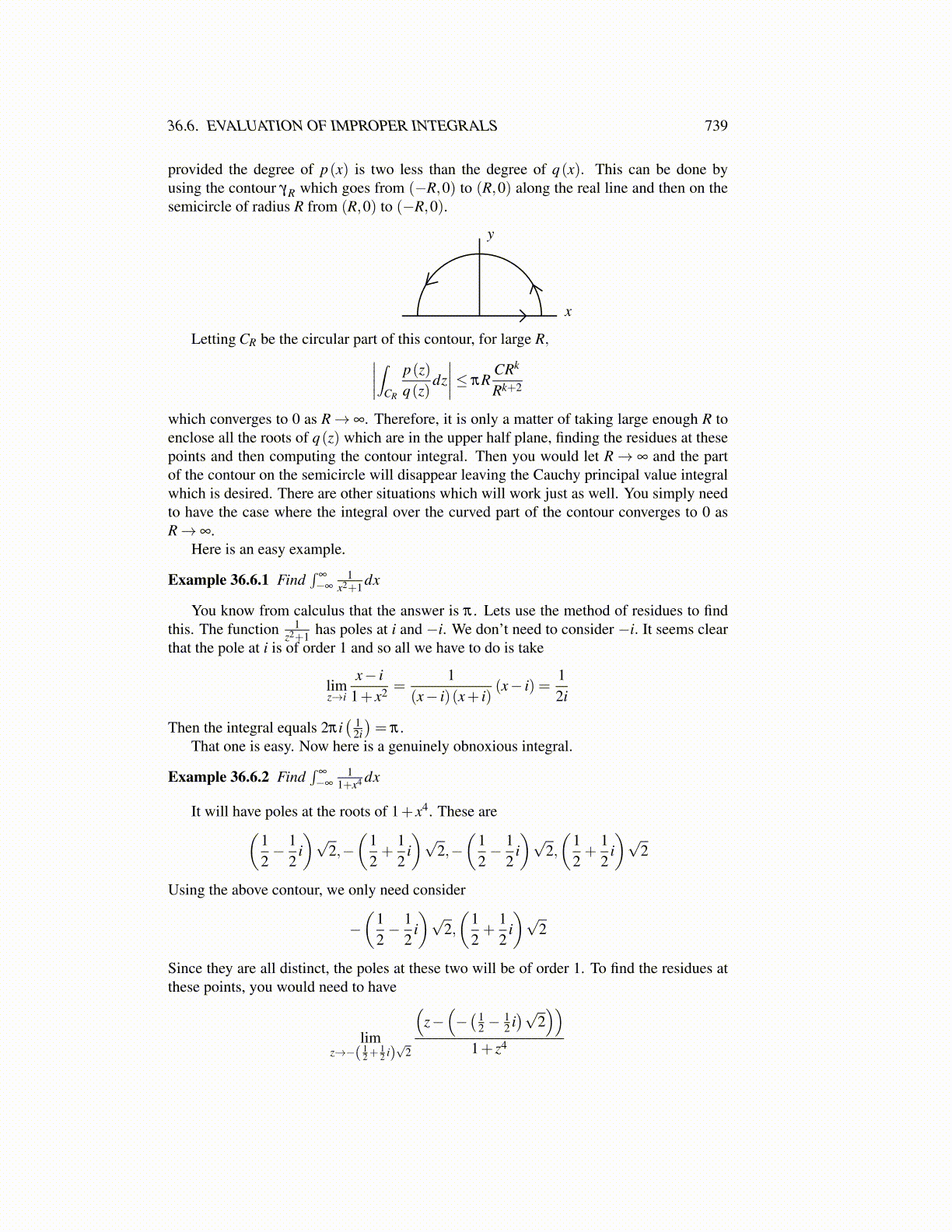
36.6. EVALUATION OF IMPROPER INTEGRALS 739
provided the degree of p(x) is two less than the degree of q(x). This can be done byusing the contour γR which goes from (−R,0) to (R,0) along the real line and then on thesemicircle of radius R from (R,0) to (−R,0).
x
y
Letting CR be the circular part of this contour, for large R,∣∣∣∣∫CR
p(z)q(z)
dz∣∣∣∣≤ πR
CRk
Rk+2
which converges to 0 as R→ ∞. Therefore, it is only a matter of taking large enough R toenclose all the roots of q(z) which are in the upper half plane, finding the residues at thesepoints and then computing the contour integral. Then you would let R→ ∞ and the partof the contour on the semicircle will disappear leaving the Cauchy principal value integralwhich is desired. There are other situations which will work just as well. You simply needto have the case where the integral over the curved part of the contour converges to 0 asR→ ∞.
Here is an easy example.
Example 36.6.1 Find∫
∞
−∞
1x2+1 dx
You know from calculus that the answer is π . Lets use the method of residues to findthis. The function 1
z2+1 has poles at i and −i. We don’t need to consider −i. It seems clearthat the pole at i is of order 1 and so all we have to do is take
limz→i
x− i1+ x2 =
1(x− i)(x+ i)
(x− i) =12i
Then the integral equals 2πi( 1
2i
)= π .
That one is easy. Now here is a genuinely obnoxious integral.
Example 36.6.2 Find∫
∞
−∞
11+x4 dx
It will have poles at the roots of 1+ x4. These are(12− 1
2i)√
2,−(
12+
12
i)√
2,−(
12− 1
2i)√
2,(
12+
12
i)√
2
Using the above contour, we only need consider
−(
12− 1
2i)√
2,(
12+
12
i)√
2
Since they are all distinct, the poles at these two will be of order 1. To find the residues atthese points, you would need to have
limz→−( 1
2+12 i)√
2
(z−(−( 1
2 −12 i)√
2))
1+ z4